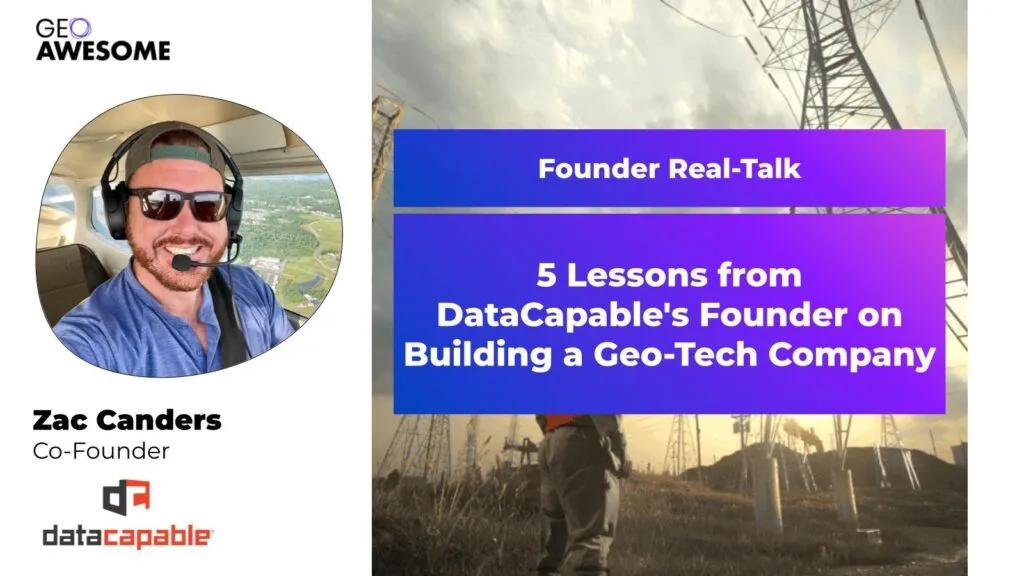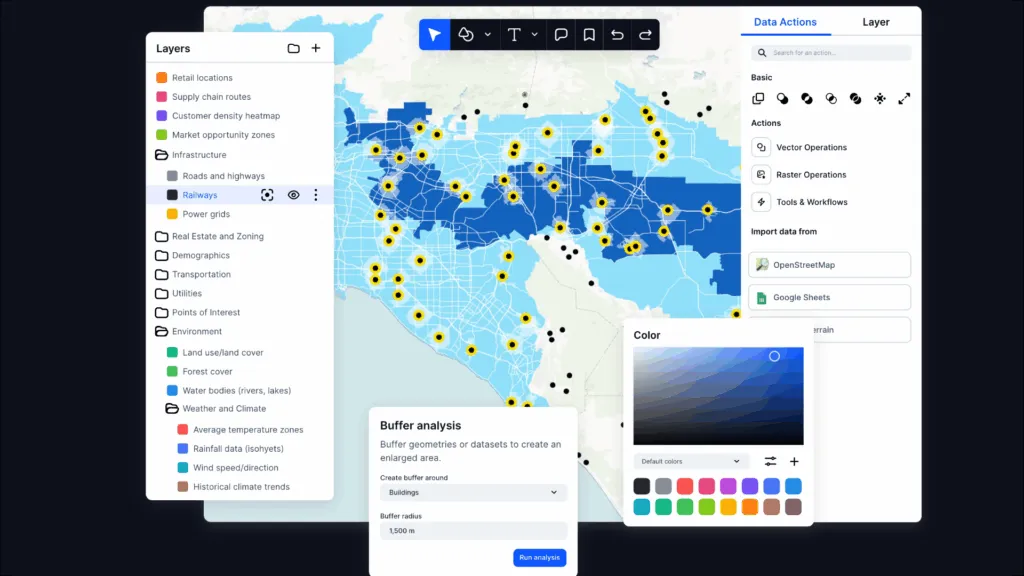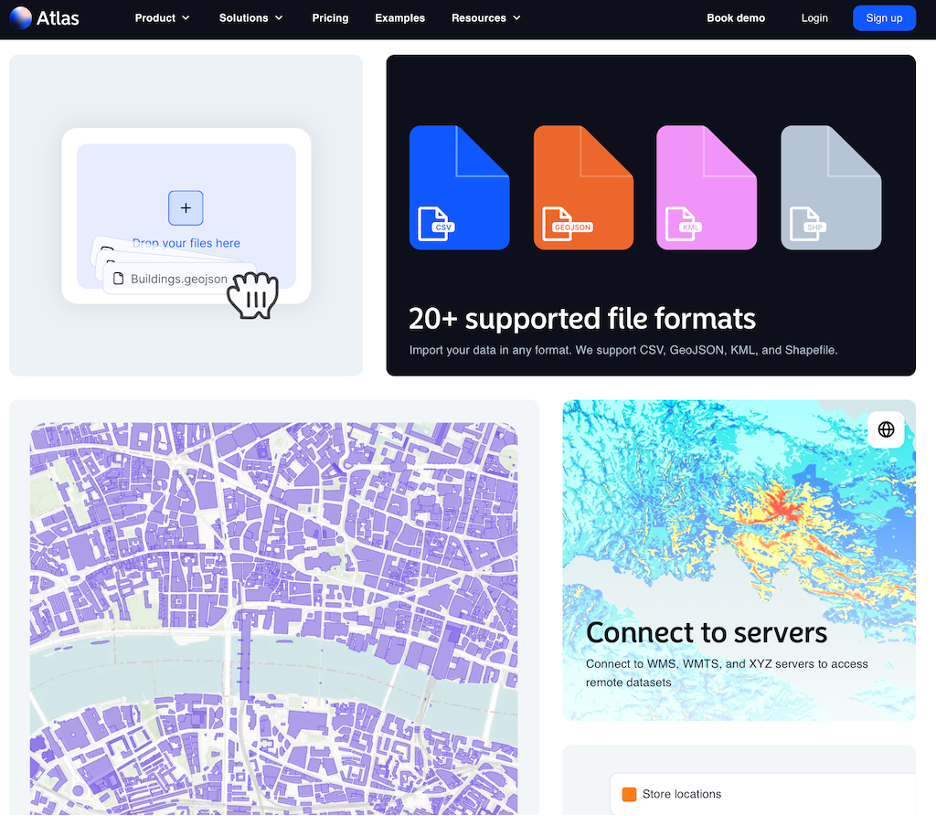
Beyond the Tech: 5 Lessons from DataCapable’s Founder on Building a Geo-Tech Company
In a first installment of Geoawesome Founder Real Talk series, a platform dedicated to fostering peer-to-peer networking and sharing entrepreneurial journeys in the geospatial industry, I had the interviewing Zac Canders, the co-founder of DataCapable. Zac’s story is a powerful reminder that building a successful company isn’t just about having a great idea; it’s about a relentless focus on solving a problem, constant adaptation, and building the right team. The recording of the entire interview including audience Q&A is available here.
The Origin Story: A Problem-First Approach
The idea for DataCapable was sparked by the aftermath of Superstorm Sandy. Zac, a former utility operations professional, recognized the immense challenge of coordinating resources and understanding the scope of damage during large-scale emergencies. He envisioned a system where anyone could take a photo and get it onto a map, providing a real-time, ground-level view of an event. This problem-centric approach, rather than a technology-first one, became the foundation of DataCapable’s mission.
In the company’s early days, this vision manifested in using social media data, specifically from platforms like Twitter, to identify and map events like power outages. This was a novel application of technology at the time. Today, the company leverages advanced AI and machine learning to analyze a variety of data sources, from open-source platforms to real-time audio analytics, to detect and communicate threats like wildfires and active shooter events.
Technology and the Human-Augmented AI Model
Zac explained that while technology continues to evolve at a rapid pace, the goal remains the same: to provide actionable insights. The company’s progression from simple data scraping to sophisticated AI models was driven by both customer demand and the team’s desire to build a more robust platform.
A key takeaway from Zac’s experience is the concept of human-assisted AI. He believes that while AI algorithms are powerful for detecting events, a human element is still crucial for verification and adding context. This hybrid model ensures accuracy and reliability, preventing the kind of “noise” that machine learning models can produce, such as misinterpreting a photo of a drink for a mudslide.
Building the Team and Navigating Partnerships
According to Zac, a successful startup isn’t just about the product; it’s about the people. He emphasized that building a strong team and fostering a healthy company culture is paramount. His advice for aspiring entrepreneurs includes:
- Be passionate about the problem: Deep engagement with your industry’s community is essential for long-term success.
- Focus on getting paid: While building a great product is important, a business cannot survive without a strong focus on sales and timely payments.
- Don’t give your product away for free: Always attach a value to your product or service, even in pilot programs, to demonstrate its worth.
- Build a strong support system: Delegate non-core tasks like accounting and legal work to professionals. This frees up founders to focus on building the business.
- Don’t burn out: Set boundaries and maintain a healthy work-life balance to avoid becoming jaded.
DataCapable’s growth was also significantly aided by strategic partnerships with industry leaders like Esri and Amazon Web Services. Zac highlighted the value of these relationships, stating that they provided opportunities to expand their reach and gain credibility within the geo-tech space. He strongly recommends that new founders engage with these ecosystems to find mentors, pilot clients, and build a network of advocates.
The recording of the entire interview including audience Q&A is available here.
In the 2nd edition of Geoawesome Founder Real-Talk, we are interviewing Marco Bernasocchi, founder of OpenGIS.ch. You can register for the live interview and community networking event here.





